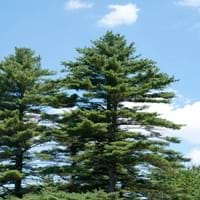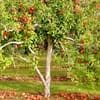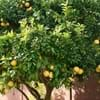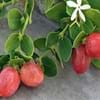Life Span
Perennial
Perennial
Type
Flowering Plants, Fruits, Trees
Needled or Scaled Evergreen
Origin
Central Asia
North America, Northeastern United States, Mid-Atlantic United States, North-Central United States, Canada
Types
Aceymac apple, Bailey Sweet apple, Dabinett apple, Nehou apple
Eastern white pine, Western white pine,Limber pine ,Chinese white pine,Japanese white pine,Vietnamese white pine
Habitat
Hillside
Lowland, Riverbanks, Wet forest, Woods
USDA Hardiness Zone
5-8
3-7
Sunset Zone
A1, A2, A3, 8, 9, 10, 11, 12, 13, 14, 15, 16, 17, 18, 19, 20, 21, 22, 23, 24
1a, 1b, 2a, 2b, 3a, 3b, 4, 5, 6
Habit
Oval or Rounded
Pyramidal
Flower Color
White
Pink, Yellow
Flower Color Modifier
Not Available
Bicolor
Fruit Color
Green, Red
Brown
Leaf Color in Spring
Dark Green
Green, Blue Green
Leaf Color in Summer
Green
Green, Blue Green
Leaf Color in Fall
Brown, Green, Light Yellow
Green, Blue Green
Leaf Color in Winter
Not Available
Green, Blue Green
Leaf Shape
Oblong
Needle like
Plant Season
Spring
Spring, Summer, Fall, Winter
Sunlight
Full Sun, Partial shade
Full Sun, Partial Sun
Type of Soil
Loamy
Loam, Sand
The pH of Soil
Neutral
Acidic, Neutral
Soil Drainage
Well drained
Well drained
Bloom Time
Fall, Summer
Early Spring, Late Spring, Mid Spring
Tolerances
Drought
Drought
Where to Plant?
Ground
Ground
How to Plant?
Grafting, Seedlings, Transplanting
Cuttings, Seedlings
Plant Maintenance
Medium
Medium
Watering Requirements
Medium
Keep ground moist, Keep the Soil well drained, Requires regular watering
In Summer
Lots of watering
Lots of watering
In Spring
Moderate
Moderate
In Winter
Average Water
Average Water
Soil pH
Neutral
Acidic, Neutral
Soil Type
Loamy
Loam, Sand
Soil Drainage Capacity
Well drained
Well drained
Sun Exposure
Full Sun, Partial shade
Full Sun, Partial Sun
Pruning
Prune when plant is dormant, Remove dead or diseased plant parts
Prune once the plant is tall enough, Prune to stimulate growth
Fertilizers
All-Purpose Liquid Fertilizer
All-Purpose Liquid Fertilizer
Pests and Diseases
Aphids, Canker, Caterpillars, Powdery mildew, Root rot
Adelgids, Bark beetles, Blister Rust, Canker, Sawfly Larvae, Spruce spider mite, White pine weevil
Plant Tolerance
Drought
Drought
Flower Petal Number
Single
Single
Fragrant Bark/Stem
No
Yes
Foliage Texture
Medium
Medium
Foliage Sheen
Matte
Not Available
Attracts
Birds
Birds, Butterflies, Flying insects, Insects
Allergy
Mouth itching, Throat itching
Eye irritation, Itchiness, Respiratory problems, Skin irritation, sneezing
Aesthetic Uses
Not Used For Aesthetic Purpose
Beautification, Decorating walls, Ground Cover, Landscape Designing, Mixed Border, Showy Purposes, Used for decorating walls, fences, gates, hedges, etc., Used for making hedges
Beauty Benefits
Not Available
Promotes healthy skin, Protects from sun damage, Skin Problems
Environmental Uses
Air purification
Air purification, Food for animals, Food for birds, Prevent Soil Erosion, Shelter for wildlife, soil stabilisation
Medicinal Uses
Cancer, constipation, Diabetes, Diarrhea, Dysentry, Fever, Heart problems, Tooth ache
Demulcent, Diuretic, Expectorant, Miscellany, Pectoral, Salve
Part of Plant Used
Fruits
Flowering Tips, Inner Wood, Leaves, Seeds
Other Uses
Used As Food, Wood is used for making furniture
Application in Furniture, Condiment, Food for animals, Paper pulp, Showy Purposes, Used as Christmas Tree, Used as Ornamental plant, Used for its medicinal properties, Used for Landscaping
Used As Indoor Plant
No
No
Used As Outdoor Plant
Yes
Yes
Garden Design
Fruit / Fruit Tree, Shade Trees, Showy Tree
Feature Plant, Screening, Wind Break, Shade Trees
Botanical Name
Malus domestica
PINUS strobus
Common Name
Apple Tree
eastern white pine, Weymouth pine, soft pine
In Hindi
सेब का वृक्ष
Pinus strobus
In German
Apfelbaum
Weymouth-Kiefer
In French
Pommier
Pinus strobus
In Spanish
Manzano
Pinus strobus
In Greek
μηλιά
Pinus strobus
In Portuguese
Macieira
Pinus strobus
In Polish
jabłoń
Sosna wejmutka
In Latin
Arbore
Pinus strobus
Phylum
Magnoliophyta
Coniferophyta
Class
Magnoliopsida
Pinopsida
Clade
Angiosperms, Eudicots, Rosids
Not Available
Tribe
Not Available
Pineae
Subfamily
Not Available
Pinoideae
Number of Species
Not Available
Importance of Apple Tree and White Pine
Want to have the most appropriate plant for your garden? You might want to know the importance of Apple Tree and White Pine. Basically, these two plants vary in many aspects. Compare Apple Tree and White Pine as they differ in many characteristics such as their life, care, benefits, facts, etc. Every gardener must at least have the slightest clue about the plants he wants to plant in his garden. Compare their benefits, which differ in many ways like facts and uses. The medicinal use of Apple Tree is Cancer, constipation, Diabetes, Diarrhea, Dysentry, Fever, Heart problems and Tooth ache whereas of White Pine is Demulcent, Diuretic, Expectorant, Miscellany, Pectoral and Salve. Apple Tree has beauty benefits as follows: Not Available while White Pine has beauty benefits as follows: Not Available.
Compare Facts of Apple Tree vs White Pine
How to choose the best garden plant for your garden depending upon its facts? Here garden plant comparison will help you to solve this query. Compare the facts of Apple Tree vs White Pine and know which one to choose. As garden plants have benefits and other uses, allergy is also a major drawback of plants for some people. Allergic reactions of Apple Tree are Mouth itching and Throat itching whereas of White Pine have Eye irritation, Itchiness, Respiratory problems, Skin irritation and sneezing respectively. Having a fruit bearing plant in your garden can be a plus point of your garden. Apple Tree has showy fruits and White Pine has showy fruits. Also Apple Tree is flowering and White Pine is not flowering . You can compare Apple Tree and White Pine facts and facts of other plants too.





